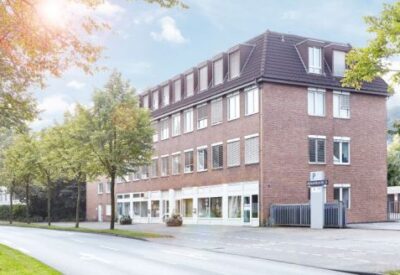Prostate Therapy
Focal treatment for prostate cancer with TULSA-PRO
Prostate cancer is the most common cancer in men. However, prostate cancer is not always life-threatening. The degree of malignancy of a tumour is decisive. A tumor is considered malignant if it has a Gleason score of 6 to 10. A Gleason score of 6 is considered low malignant, one in 7 is intermediately malignant and tumors with a degree of malignancy of 8, 9 and 10 are classified as highly malignant.
Men with Gleason Score 6 (3+3) and 7a (3+4) prostate cancer usually have the option to choose between therapy methods, provided the criteria for the respective therapy are met.
The best-known therapy method is total surgery. More and more men are shying away from this method because adverse side effects, such as impotence or incontinence, can often occur.
We perform MRI-guided HIFU treatment (TULSA-PRO) for a localized and low malignant prostate tumor. With this treatment, we can usually treat a tumour at a safe distance in healthy tissue without negatively affecting the functions of the prostate gland or causing incontinence.
For more information see Treatment for prostate cancer
Treatment for prostate reduction with TULSA-PRO
With increasing age, the prostate can cause symptoms for men. This is because diseases of the prostate increase with age. The most common disease of aging men is benign and age-related prostatic hyperplasia (benign prostatic hyperplasia). Enlargement can have a different effect on each man. Enlargement is known in some men, but causes little discomfort. In others, the symptoms can be stressful and cause everyday life, for example, to depend on the constant urge to urinate, and at night it is hardly possible to sleep all night.
Symptoms of a slight enlargement can often be alleviated by appropriate medication. A pronounced increase in prostate volume can usually only be reduced by treatment.
We perform the MRT-guided HIFU treatment, the so-called TULSA-PRO, to reduce the size of the prostate. The special thing about this therapy is that we can specifically treat the enlarged inner area of the prostate and thereby maintain all the function of the man as it was before the treatment.
More information under Prostate resection
Active surveillance as an alternative therapy method
Active monitoring is a therapy method without treatment, but, as the name of the therapy already indicates, monitoring a detected prostate cancer. Monitoring is carried out through regular check-ups. The prerequisite for this therapy, apart from the tumour characteristics, is the psyche of the man concerned and to what extent he can cope with it, to lead a carefree life with a malignant tumour in the prostate. With active monitoring, it is usually possible to replace this therapy with treatment if, for example, the tumour should change adversely or the man concerned does wish to have the tumour removed in the course of time.
More information under active surveillance
 English
English
 Deutsch
Deutsch  Nederlands
Nederlands 





